More information on KB9 and a new faster and smaller version

About small SBC systems
More information on KB9 and a new faster and smaller version

Microsoft’s 6502 BASIC is now Open Source, and that includes KB9 or as it is officially called:
MOS TECH 6502 BASIC V1.1
COPYRIGHT 1977 BY MICROSOFT
Microsoft’s 6502 BASIC is now Open Source
“Now, for the first time, this influential 6502 version is truly yours to explore, modify, and share.”
This means that we are allowed to distribute and modify KB9 and derivates without breaking licenses!
Also see the pagetable post from 2005 that explains a lot about this source.
The license that goes with 6502 BASIC is the MIT License.
On this page you will find:

Another MOS TECH BASIC for KIM-1, lower serial number

KB-9 stands for Microsoft Basic V1.1 for the KIM-1 with 9 digits precision. Actually, when you run it, it is called MOS Tech 6502 Basic v1.1 Copyright 1977 by Microsoft Co.
The ‘9’ stands for 9 digit precision floating point numbers. A KB-6 (6 digits precision) existed, but no copy ever turned up.
Articles on KB9 in the clubmagazine KIM/6502 Kenner:
– KIM Kenner 4 Siep de Vries Evaluatie 8K Basic, test of accuracy of KB-9, Dutch
– KIM Kenner 5 Uwe Schroder, English, Some Basic problems solved
– KIM Kenner 6 S. Woldringh Patches op 8K Basic Load and Save commands
– KIM Kenner 10 p 10 Microsoft Basic, Hans Otten.
– KIM Kenner 11 p 15 S. Woldringh Patches op 8K Basic part 2
– KIM Kenner 11 p 19 W. van Gelderen Read and Write on cassette for 8K Basic
– KIM Kenner 12 p 15 Patches Microsoft Basic, Hans Otten. Trace mode Renumber
– KIM Kenner 14 p 39 Patches Microsoft Basic, Hans Otten. Calculated line numbers
– 6502 Kenner 16 p 49 Patches Microsoft Basic, W. Blonk Corrections on KIM Kenner 12
– 6502 Kenner 19 p 34 Patches Microsoft Basic, Hans Otten. Speed up Basic 10% with ROR
– 6502 Kenner 22 p 12 Patches Microsoft Basic part 1, van Nieuwenhove Koen, adapt KB-9 to Elektor Junior
– 6502 Kenner 23 p 12 Patches Microsoft Basic part 2, van Nieuwenhove Koen, adapt KB-9 to Elektor Junior
– 6502 Kenner 24 p 14 Patches Microsoft Basic part 3, van Nieuwenhove Koen, adapt KB-9 to Elektor Junior
– 6502 Kenner 25 p 6 Patches Microsoft Basic part 4, van Nieuwenhove Koen, adapt KB-9 to Elektor Junior
– 6502 Kenner 29 p 33 KB-9 Basic on Acorn SYSTEM-1
– 6502 Kenner 32 p 21 W. L. van Pelt KB-9 Basic Tokenized keywords and addresses
All the KB9 KIMKenner articles in one PDF here
Language lab section in the 6502 User Notes:
– Vol 13 Basic tips, Renumber Page 1, Page 2
– Vol 14, Tips, Paging, Automatic Line numbers, the GET statement, USR function
Page 1, Page 2, Page 3, Page 4
– Vol 15 USR Dispatch, Load/save Basic arrays Page 1, Page 2, Page 3
-Vol 16 Line Editor Page 1, Page 2, Page 3, Page 4
-Vol 17 IEEE, Save Load cassette Page 1, Page 2, Page 3, Page 4
After I bought MOS Basic for the KIM-1 in 1978 a lot of study went into understanding and adapting the interpreter. In the Dutch club magazine the KIM Kenner (see above) I and others published my work on it, like tape I/O in hypertape format, calculated goto’s, trace mode, paged output and such.
I modified it later on to suit a bit better to my system, that moved from the KIM-1 I/O to keyboard input via a ASCII keyboard, output to video terminal and a parallel matrix printer Heathkit H14. Even later a real serial interface (ACIA 6850) was used for I/O. I also replaced the startup routine, from destructive to reusable and no questions asked.
Here the Micro Ade source of the patches to V3.0 (Parallel keyboard, video output, H14 printer) and nothing asked non-destructive startup routine. I should rewrite that to the current KB-9 V2 to also include the GET and Backspace patches. V1.3 perhaps?
In the previous section the pagetable article was shown, with resources to recreate from source many 6502 Basic’s, like KB-9.
Here an example how I, quick and dirty, used this to create a KB-9 named V1.2 which is smaller and faster than the original.
This is how to prepare for it (Windows, can be done also on Linux)
Do the adaptations as described below or your own:
ca65 -D kb9 msbasic.s -o tmp/kb9v2.o -l tmp/kb9v2.lst ld65 -C kb9.cfg tmp/kb9v2.o -o tmp/kb9v2.bin -Ln tmp/kb9v2.lbl
First example: use the ROR instruction and suppress nulls sent to the terminal and Clear decimal and fix GET
I changed this:
CONFIG_NULL := 1 ;CONFIG_ROR_WORKAROUND := 1 ; patch HO 2021
COLD_START:
.ifdef SYM1
jsr ACCESS
.endif
.ifdef KBD
.
.
.
.else
.ifndef CBM2
cld ; patch for KIM-1 HO 2021
ldx #$FF
stx CURLIN+1
Assemble and link with the batch file makekb9v2.bat, this will deliver in the folder tmp/
– kb9v2.bin file : load as usual at $2000
– kb9v2.lbl text file
– kb9v2lst textfile
Start KB9 V2 now at location $3F8E, label COLD_START (used to be $4065, so we gained some RAM), see the lbl file.
Here is an archive with all files mentioned above.
And here the new KB-9 V1.2 executable, faster (no ROR instruction emulation) and a bit smaller.
You can test all this with the KIM-1 Simulator (version 0.9.3 lets you load CC65 type of symbol files)
I know KB-6 existed. The ‘6’ stands for the precision in digits of the floating point number. In the documentation KB-6 is described.
Never seen a version in the wild. So the reconstruction here is not checked with the original, addresses in the reconstruction from the linker differ from the documentation.
Perhaps the ROR workaround or the insertion of CLD in the init.s caused this.
KB-6 can be ‘reconstructed’ since other versions of 6 digit Microsoft Basic are in the ‘pagetable sources’.
It takes one define added in define_kim.s, changes on the original file are now:
; CONFIG_NULL := 1 ; patch HO 2021 ;CONFIG_ROR_WORKAROUND := 1 ; patch HO 2021 CONFIG_SMALL := 1 ; patch H0 2021
Assemble and link as above, replace kb9v2 with kb6 in the batch file. See the archive for a working batch file.
COLD_START moves to $3D50, size shrinks to 8K.
Download KB-6 here.
As you can see in the following screenshots it works! Note the number of digits is less, as expected. It should be faster also.

Microsoft Basic for the KIM-1 KB-9

Microsoft Basic for the KIM-1 KB-6, less precision, smaller program size
The bug was described and fixed first by an article in the KIM User note
From the pagetable sources:
BUG: The beq/bne L2AF8 below is supposed to be always taken. For this to happen, the last load must be a 0 for beq and != 0 for bne.
The original Microsoft code had ldx/ldy/bne here, which was only correct for a non-ZP INPUTBUFFER. Commodore fixed it in CBMBASIC V1 by swapping the ldx and the ldy. It was broken on KIM, but okay on APPLE and CBM2, because these used a non-ZP INPUTBUFFER. Microsoft fixed this somewhere after KIM and before MICROTAN, by using beq instead of bne in the ZP case.
.ifdef CBM1
ldy #>(INPUTBUFFER-1)
ldx #<(INPUTBUFFER-1)
.else
ldx #<(INPUTBUFFER-1)
ldy #>(INPUTBUFFER-1)
..
beq 08
You can easily fix this in KB9 by changing the branch in $2AEE from $D0 (bne) to $F0 (beq).
I have fixed this in the source of KB9V2 (KB6 does not have the GET statement) .
Correcting typing errors can be done with the _ key ($5F). On a video terminal, like we use nowadays it can be done with backspace.
The way characters are handled by the input routine do not allow to just replace the compare with _ (C9 5F) with 08 for backspace.
A trick by Jim W4JBM can be used to reuse the BELL handling (07) to a backspace.
Replace in inline.s
INLINAIM:
.endif
.ifndef CONFIG_NO_LINE_EDITING
cmp #$07
beq L2443
with
INLINAIM:
.ifndef CONFIG_NO_LINE_EDITING
cmp #$08
beq L2420
In the original KB9.BIN you can do that with
poke 9260,8
poke 9262,241



Microchess and MICRO-ADE are two products from Micro-Ware Limited, a company by Peter R. Jennings.
The sources of these two programs have been typed in and assembled by me from August to November 2021, and the resulting binary output is identical to my saved from cassette tape binaries.
All these files (source, binaries, papertape, audio cassette wave files, and manuals) are now
available at the KIM-1 Software page.
In the KIM User Notes there were several KIM-1 games published by Robert Leedom.
A tiny Colossal Cave Adventure, HEXPAWN and Baseball.
With his help and others these games have been typed in again and are playable on any KIM-1 (Reproduction), PAL-1, Kim Clone, Micro-KIM.
In August 2021 I (Hans Otten) typed in the source of MICRO-Ade from the listing in the manual, the output is binary compatible with the binaries I saved from tape and are tested on the KIM-1.
The result is a source identical (in standard MOS Technology assembler format) to the listing and binary identical to the page image. I also made new high quality scan of the manual and the listing.
Micro Ade program source and binary
Scanned manual
Scanned listing
Read in the KIM KENNER archive the source of the enhancements (text by S.T. Woldringh o.a.)
The KIM club enhanced Micro Ade to version 8. Download here the binary with a 2 page command summary.
MICRO-ADE V8
 New version of the Pascal-M system, run Pascal programs on the KIM-1.
New version of the Pascal-M system, run Pascal programs on the KIM-1.

A KIM-1 simulator with the look and feel of the KIM-1 and a debugger to look ‘inside’
NEW
The KIM-1 Simulator comes with a ‘console’, a glass teletype 24×80 screen. It has a subset of ANSI/VT100 support.
Of course there are much better terminal emulators, like Teraterm, Putty, Coolterm, Minicom etcetera.
And a real VT100 type device is really fun! Or a real Teletype …
Now the KIM-1 Simulator can use either an external serial device,e.g a PC with Teraterm or Minicom, or a terminal emulator locally on the same PC.
Read how to use a serial terminal emulator extern or on the same PC>
Setup for Windows and Ubuntu and Raspberry Pi 5, Version 1.6.0
Source (requires Lazarus IDE 2.x))
Bundled with Conversion 8 bit hex formats utility, to convert to/from various binary files like MOS Papertape, Intel Hex, Motorola S-record and more.

Console, with choice of colors of font and background:
KIM-1 built in ROM tape load and save:
If enabled (see Settings) the Simulator traps the Tape Save and Load ($1800 and $1873) and allows to save and load from the host.


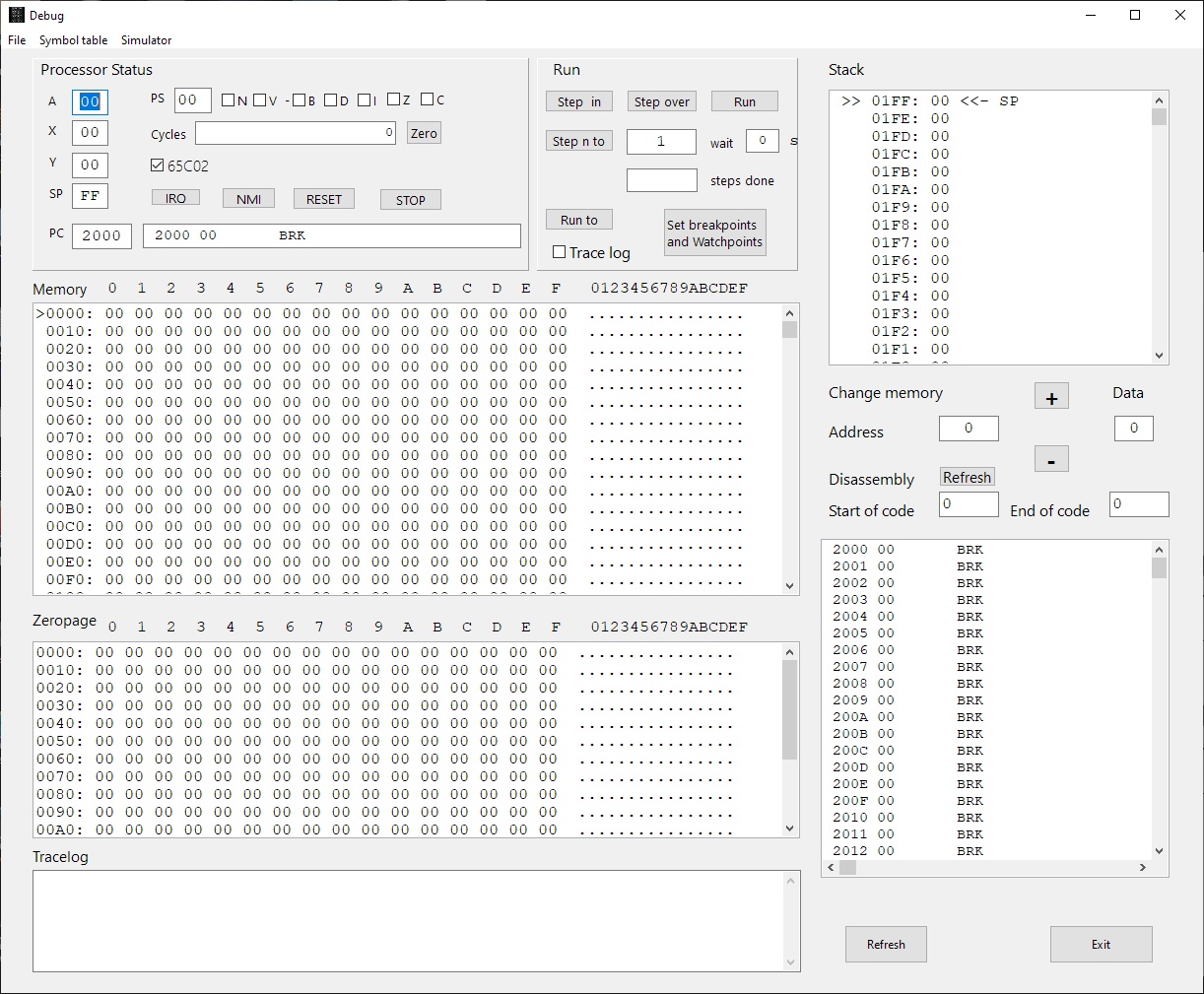


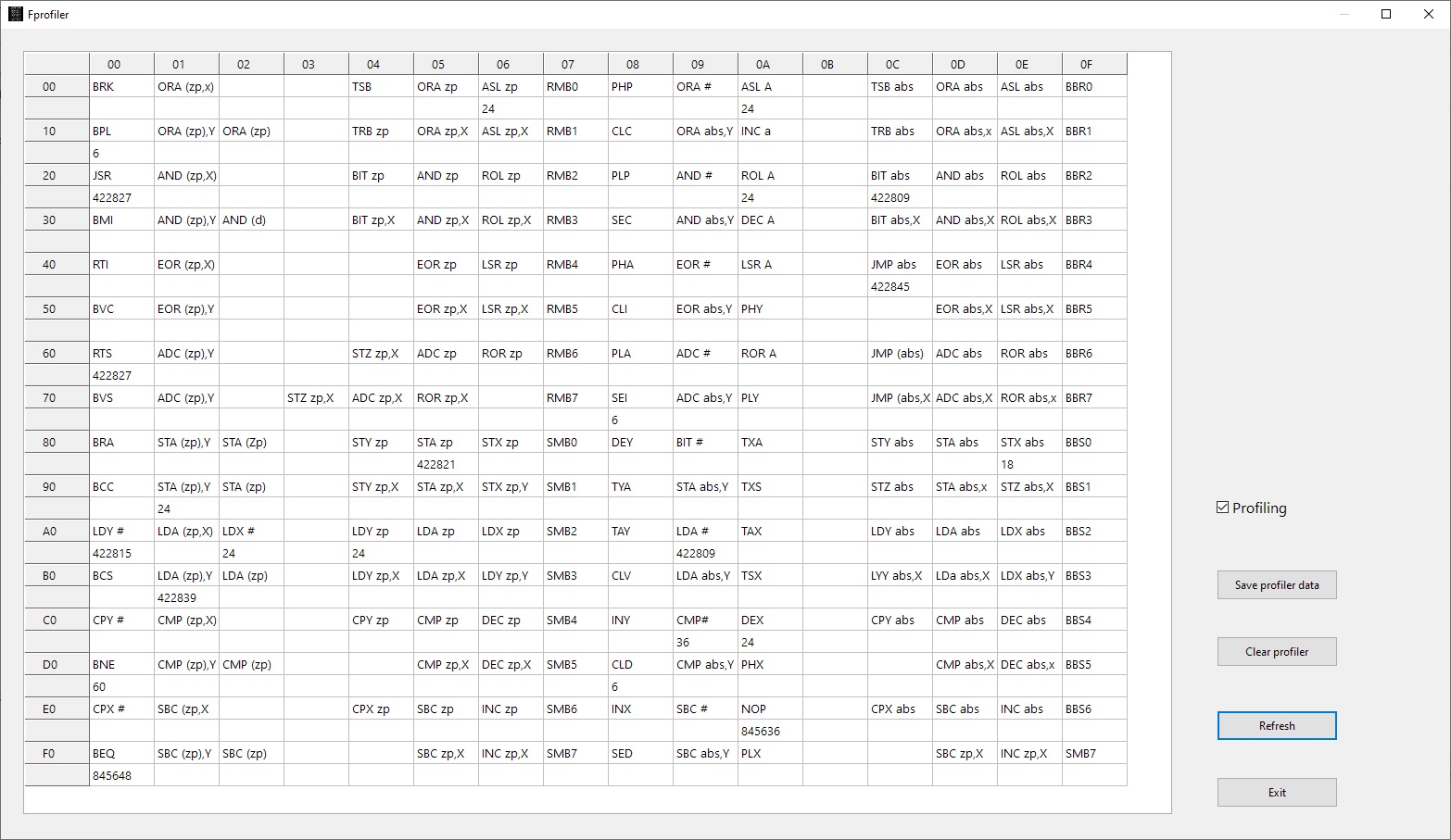
Hans Otten, 2019- 2025, Version 1.6.0
Contents
The KIM-1 simulator is written for my personal use to aid me in developing and testing software for the KIM-1. It is not meant to be a cycle exact complete KIM-1 emulation. Instead it shows as much as possible what is happening inside. So do not expect it to run the typical KIM games on the LED and Keypad.
Just for fun and a tribute, it looks and feels and functions as a real KIM-1. The debugger is what the purpose of this program is. The program is developed on Windows 10 (32 bit executable) and tested and compiled on and Ubuntu . Since the source is available, it will run anywhere Lazarus IDE is available.
What the KIM_1 Simulator does not do as the real KIM-1:
The KIM-1 Simulator is a KIM-1 with:
Windows
Run KIM1SIMsetup.exe or place the files KIM1SIM.EXE + KIM1Simulator.html file in a folder of choice.
For high DPI screens change the Properties of the KIM1SIM.EXE, Compatibility settings,
– Change high DPI settings,
– check high DPI scaling Override,
– scaling performed by “System(enhanced)”.
Ubuntu 20.04.3 LTS
Execute KIM1SIM from the Ubuntu folder. Works fine on a modern PC.
Note that the font used is Courier New. Install ttf cour.ttf on Linux in .home
Other platforms
If Lazarus is available then install Lazarus (Version 2 or higher) and build from source.
No extra packages are required, just a standard Lazarus.
Open the project KIM1SIM.LPI and do RUN – Build to get an executable.
This may work on MacOS. It seems not easy, Lazarus is not that stable on MacOS it seems.
After installation
Start the KIM-1 Simulator and choose Settings to
– set the default working directory. Otherwise files may appear at locations you do not want!
– select the keyboard layout in the console (Geman and US International for the moment)
Start the emulator main program and push the ‘Run’ icon. Then press the RS key on the keyboard (or type R).
After that the LEDs awake and the keyboard is operational as a KIM-1.
[0] to [F] - Sixteen keys used to define the hex code of address or data [AD] - selects the address entry mode [DA] - selects the data entry mode [+] - increments the address by +1 but does not change the entry mode [PC] - recalls the address stored in the Program Counter locations (PCH, PCL) to the display [RS] - causes a total system reset and a return to the control of the operating program [GO] - causes program execution to begin starting at the address shown on the display [ST] - terminates the execution of a program and causes a return to the control of the operating program
0-9 : key 0 - 9 a-f : key A - F A-F : key A - F + : + A : AD D : DA P,p : PC G,g : GO S,s : ST R,r : RS S,s : ST
Press the TTY switch and run/stop and you have a console terminal. The KIM-1 teletype commands now work and also programs line KB9 Basic can be used. See the Console chapter below.
The KIM-1 tape load ($1873) and save ($1800) programs are emulated.
Fill in the tape ID and optionally start and end address as documented in the KIM-1 User manual.
Start the Save at $1800 and the load at $1873 with the KIM-1 monitor.
You will be prompted for file to load or save.
Use the menu Settings to dipslay the possible settings that survive sessions.
– Set default work folder to choose a folder for all files created or used by the emulator. The settings are saved between sessions.
– Set the preferred keyboard layout (US International German,Belgium (french), others await your input, see below)
Default settings config file : “/home/(user)/.config/KIM1SIM.cfg” or C:\users\(user)\Appdata\local\KIM1SIM.cfg”
Loaded at startup, updated via the Settings menu.
The menu has Load and Save functions, you can load and save to many 8 bit binary formats as MOS papertape, Intel HEX, Motorola S record, binary and simple hex.
The 16 bit versions of Intel Hex etc are not supported.
The Define Type is a text file format suitable for inclusion in assembler source.
The layout is as follows (all in hex)
; <Start address> - <end address> <define text> $<hex data> .. where <define text> is what you fill in the Define text entry, may be empty. Example: ; 1800-1805 .byte $A9 .byte $AD .byte $8D .byte $EC .byte $17 .byte $A9
Press the TTY console switch to let the KIM simulator use a glass teletype in a console window. The standard KIM user interface is shown, see the manual how to use.
Note: set the PC keyboard to CAPS Lock, only uppercase is used in the KIM monitor.
Note the menu options to record a session, (Load Text to Console) or play (Save text from Console, followed by Stop saving text ) a text file in the console.
This is in fact the same functionality as a teletype with high speed papertape punch or reader. You can use this to load and save Basic programs as ASCII text files. Or use the KIM-1 tape routines built in KB9 Basic!
The console is an emulation video terminal (ANSI color, subset) connected to an ACIA (a Motorola 6850) in the KIM-1. The KIM Monitor is patched to send or receive via the ACIA and is transparant to the user of the KIM-1 I/O routines (even the quirlks like flags and returned register values!)
Keyboard input, when the console window has focus, is sent to the serial input of the ACIA. No local echo. The KIM-1 monitor only accepts uppercase (hint: Caps lock!), user programs are free to use upper or lowercase.
Characters sent tot to ACIA output are received by the console window and handled as a VT100 would do, a subset of the ANSI/VT100 is implemented.
All keys of the PC are usable, SHIFT works. Note the translation of codes from the PC keyboard to ASCII characters is for the keybaord choosen in Settings.
Other mappings are possible by changing the routine in console.pas: procedure TFconsole.FormKeyDown
Received characters by the console are handled as follows, a subset of the ANSI set.
Single control character
$01 : CursorHome $04 : CursorRight $05 : CursorUp BS : Backspace TB : Tab LF : LineFeed FF : ClearScreen CR : CarriageReturn $13 : CursorLeft $16 : DeleteToEndofLine $18 : CursorDown DEL : Backspace ESC sequences ESC[K Clear from cursor to the end of the line ESC[0K Clear from cursor to the end of the line ESC[1K Clear from the beginning of the current line to the cursor ESC[2K Clear the whole line ESC[J Clear the screen from cursor ESC[0J Clear the screen from cursor ESC[1J Clear the screen until cursor position ESC[2J Clear the screen and move the cursor to 0-0, defined sprites are removed, loaded bitmaps are kept Insert / Delete ESC[1@ Insert a blank character position (shift line to the right) ESC[1P Delete a character position (shift line to the left) ESC[1L Insert blank line at current row (shift screen down) ESC[1M Delete the current line (shift screen up) Move cursor ESC[H Move to 0-0 ESC[f Move to 0-0 ESC[s Save the cursor position ESC[u Move cursor to previously saved position ESC[(Row);(Col)H Move to row,column ESC[(Row};(Col)f Move to row,column ESC[nA Move the cursor up n lines ESC[nB Move the cursor down n lines ESC[nC Move the cursor forward n characters ESC[nD Move the cursor backward n characters Attributes ESC[m Reset all attributes ESC[0m Reset all attributes ESC[1m bold ESC[4m underline ESC[5m italics ESC[7m Turn on reverse color ESC[27m Turn off reverse color Color attributes color FG BG FG high BG high -------------------------------------------- black ESC[30m ESC[40m ESC[90m ESC[100m red ESC[31m ESC[41m ESC[91m ESC[101m green ESC[32m ESC[42m ESC[92m ESC[102m yellow ESC[33m ESC[44m ESC[99m ESC[103m blue ESC[34m ESC[44m ESC[94m ESC[104m magenta ESC[35m ESC[45m ESC[95m ESC[105m cyan ESC[36m ESC[46m ESC[96m ESC[106m black ESC[37m ESC[47m ESC[97m ESC[107m FG = foreground BG = background High = higher intensity Note that setting colors is implemented in a limited way. Combining attributes and fore/background in one Escpe sequence is not supported If you want to use for example ESC [1;31;104m (bold, red foreground, blue background) you will have to use ESC[1m ESC[31m ESC[104m Printable character (>= $20): placed on screen where the cursor is, cursor moved to next position Wrap around at end of line, screen scroll up when bottom line is reached
Handling different keyboard layouts and platform independent development is a nightmare! The Console in Version 1 and below is built for the US International keyboard, the only type I use.
SInce then some more keybaord layoyts are added, you can select form the Settings.
This means the key code translation is fine for a-z, A_Z, 0-9, with NumLock also for the numeric keyboard, backspace, delete and othr control characters. Fine for the KIM-1 monitor.
The key code translation is now not optimal for keyboards with other layouts, characters like []{}\|;:'”,<.>/?!@#$%~^&*()_+ are possibly mapped wrong.
This can be fixed in a newer version by letting the user select a keyboard layout. But I do not have all those keyboards and the information on the internet is confusing.
So I built a test program to let you help me: Testkeydown. Fill in the type of your keyboard, press at least the []{}\|;:'”,<.>/?!@#$%~^&*()_+ keys, et Num Lock and press the numeric keyboard.
Save to the file keydowntestfile.txt and sent it to me at h.otten (fill in here at sign) hansotten.nl so that I can add your variant to the Simulator.
From the menu Simulator choose Debugger to show the debug window. This windows has step/single step/run buttons, shows the registers and flags, zeropage, memory and the stack. The Trace logfile facility may store a trace of what happened.The disassembler part shows a disassembly.
Several refresh buttons let you update the current state of the machine.
First set the PC to the first instruction of the program to test.
From the Search Memory you can Search with hex 1,2 or 3 bytes in memory (leave unwanted fields blank), Fill memory and Copy/Move memory.
With a fill byte you can replace the moved bytes, leave the field empty to leave the original value.
The disassembler shows locations/labels in hex format. If the assembler symbol table is available (TASM can produce that as blank delimited list) you can load it and do some symbolic disassembly.
Load and show the symbol table from the menu “Symbol table”. Supported symbol table formats: TASM 32 bit and CA65 (part of CC65 suite).
From the menu Simulator choose RRIOT to show a windows with the current RRIOT status or you can enter new values for the various registers.
Press Refresh to update to the current state, it is not updated realtime.
The 6530-002, responsible for the KIM-1 hardware, is decoded to the relevant in/output bits.
Note that the simulator does not perform the KIM-1 LED/key functions this way. Code for output to the LED displays is currently present but commented out in the source.
Timing limiting is essential for this to work, the simulation now runs as fast as the host CPU can deliver.
Available from the ‘watches and breaks’ form or from the Window menu
This facility keeps track (once activated with the Profiling Check box) how much an instruction is executed,
Independent of the debugger, always available.
Use the Refresh button to see the current state, not automatically updated so it is no a high performance hit.
Any opcode, from o to 255, is counted. The display shows the maximum 65C02 instruction set.
You can save the profiler data to a CSV file, with instruction mnemonic and number of times executed per line.
Invalid instructions are marked as ‘Unknown’.
Focal V3D, an interpreter modeled after the DEC PDP-8 Focal interpreter runs on the KIM-1 and on the Simulator.
This program uses a trick to suppress the echoing of charaters typed on the KIM-1 TTY hardware. And another trick to get a hash/random number.
After loading both zeropage and program code, start at $2000. But first go to sSettings and choose Focal Break testing.
Only when running Focal! Set to Normal break testing for e.g. MS Basic. This setting is not saved, and resetting the emulator makes the setting to Normal.
In the Setup archive a folder with TTY programs are collected. Note that manuals etc are on the Retro website.
kb9.bin load 2000 start $4065 Microsoft KIM-1 Basic 9 digits (upercase only, set 00F1 to 0)
kb6.bin load 2000 start $3D50 Microsoft KIM-1 Basic 6 digits (upercase only, ROR instruction patched + CLD)
kb9V2.bin load 2000 start $3F8E Microsoft KIM-1 Basic 9 digits (upercase only, ROR instruction patched + CLD)
kimGFX.BIN load 2000 start 2000 Demo for K1008 video display Dave Plummer
kimGFX1.BIN load 2000 start 2000 Demo for K1008 video display Dave Plummer
kim1sim6502test.ihex start 2000 65(C)02 opcode test (lower case y/n)
Focal folder
Set in Settings Focal3D break setting
focalzp.bin load $0000
focalm.bin load $2000 start 2000
Printing disassembler
PRDISV3.PAP start B000
Note that the font used is Courier New. Install ttf cour.ttf on Linux in .home/pi/.fonts to prevent substitution with artefacts
If and when the ACIA routines and other routines in the KIM1SIM ROM are altered you need to rebuild the KIM1SIMrom.inc file.
Subfolder ‘romtoconst’ contains the binary of the original KIM ROMS (6530-002.bin, 6530-003.bin) and the additional ROM binary with ACIA routines (kimsimrom.bin).
The .inc files for the compilation of the KIM1SIM, to be placed in the main folder, are created with the program creatINC.exe, a console application (source included here).
Copy the the tree .inc files to the main folder and compile the KIM1SIM program again.
D:\myfiles\development\kim-1 simulator\romtoconst\creatINC.exe kimrom002 include file created kimrom003 include file created kimsimrom include file created
Here you find assembler sources of various tests. Assemble with TASM, included in the folder. See TASM.HTML for information.
It is convenient to compile from an editor like Notepad++, plugin NPPEXEC
with command to create intel hex file
"D:\myfiles\development\kim-1 simulator\KIM-1 assembler sources\tasm" -65 -x3 -g0 -s $(FILE_NAME) $(NAME_PART).ihex $(NAME_PART).lst -s $(NAME_PART).sym
"D:\myfiles\development\kim-1 simulator\KIM-1 assembler sources\tasm" -65 -x3 -g3 -s $(FILE_NAME) $(NAME_PART).bin $(NAME_PART).lst -s $(NAME_PART).sym
The MTU Visible Memory is a memory mapped video display made by MTU.
See the K-1008 Manual how it works.
Enabling it will display a form on which the video memory is shown (according the packing of the pixels in bytes, see the manual).
Use the Settings from to enable or disable (default) the K-1008. The base address in memory can be set to what the original board allowed with jumpers.
The K-1008 display can be resized from 1x to 3x. Larger means a slower display, not much effort has been put in making it display fast.
A fourth option is to choose for a correct aspect ratio.
Note that the pixel only appears on screen when the corresponding memory location is written to by the CPU. Use Refresh in the Debugger to force the display.
Using MS Basic: the interpreter will detect the video memory as normal memory. No harm done, MS Basic does not support the K-1008. The memory test of MS Basic is visible on the K-1008 display!
There are several ways an image can be loaded to the K-1008 video display:
How to make a C Header image file with threshold
Make a C Header image file with dithered images
Note there is a command line program in the folder K-1008 load C Header , called LoadK1008 that converts a C header image file to a K-1008 formatted binary.
D:\k1008\LoadK1008.exe h LoadK1008 is a program to convert a 320x200 C header file from GIMP to MTU Visable memory K-1008 image LoadK1008 <C header filename> <K-1008 binary filename>
Prepare the C header file in GIMP as follows:
Also there are examples of C header and binary K-1008 formatted files.
The folder K-1008 load C Header contains the Freepascal source and original JPG files.
Load in Settings the Apple 1 monitor (wozmon) into the free space of the KIM-1 tape ROM.
Start at $1AA0, back to KIM-1 monitor with ‘X’ command.
Screenshot of 1.3.3 with ‘correct’ aspect ratio.

The KIM-1 Simulator comes with a ‘console’, a glass teletype 24×80 screen. It has a subset of ANSI/VT100 support.
Of course there are much better terminal emulators, like Teraterm, Putty, Coolterm, Minicom etcetera.
And a real VT100 type device is really fun! Or a real Teletype …
Now the KIM-1 Simulator can use either an external serial device,e.g a PC with Teraterm or Minicom, or a terminal emulator locally on the same PC.
The KIM-1 Simulator starts up as usual, with the keypad active.

Activate serial input/output as follows:
Windows
Install the com0com null-modem emulator from here.
That delivers two COM ports that act as if they are connected via a null modem, anything entered at one is sent to the other and vice versa.See the device manager for the ports created.
Use a terminal emulator as Teraterm with a serial connection to the other COM port. With the same settings for serial as in the Simulator!
Then select in Settings – Use serial and start the emulator.
Note the KIM-1 only works with uppercase characters.

Linux
Use this commmand (install socat if not present).
socat -d -d pty pty
The code above returns (the pts numbers may be different).
2013/11/01 13:47:27 socat[2506] N PTY is /dev/pts/2 2013/11/01 13:47:27 socat[2506] N PTY is /dev/pts/3 2013/11/01 13:47:27 socat[2506] N starting data transfer loop with FDs [3,3] and [5,5]
Any character entered at one is sent to the other pts device as if a null modem cable is connected.
Use the device /dev/pts/2 in the KIM-1 Simulator Settings – Setup serial. Default is 9600.
Start a terminal emulator like minicom or Coolterm and select device /dev/pts/3 at 9600 baud.
Select in Settings – Use serial port /dev/pts/3 and start the terminal emulator.
Now you can control the TIM via minicom or any suitable VT100 like terminal emulator.
Select in Settings – Use serial and start the emulator
Minicom is easy to use. Just set the terminal serial port (the other than the emulator uses).
Coolterm is tested, but is a little bit troublesome to configure.
Force the serial port via Custom and ignore the warning messages.
V1.2x retracted
Can run the KIM-5 Resident Assembler loaded at E000-F7FF
A game by Robert Leedom, published in 6502 user notes #13, 1979. Typed in by Dominic Bumbaco so we can play it!

Paper tape and hex dump of the program
Original article
Original article: KIM Kenner 17 page 14, Dutch, Hans Otten. Translation 2021 Hans Otten
Problem: the KIM-1 hardware is echoing incoming serial characters to the output, no echo in software involved. Very annoying!
In the KIM Kenner 1 Siep de Vries, founder of the Dutch KIM Club mentioned how in Focal for the 6502 a trick was built in to suppress the hardware echo by manipulating the TTY out bit. I examined later how it was done, from the Focal disassembly:
34AF E6 76 L34AF INC $76 ; random number? 34B1 2C 40 17 BIT H1740 ; check if character is incoming 34B4 30 F9 BMI H34AF ;=> wait until startbit 34B6 AD 42 17 LDA H1742 34B9 29 FE AND #$FE ; clear PA7 34BB 8D 42 17 STA H1742 34BE 20 5A 1E JSR H1E5A ; KIM-1 input 34C1 48 PHA 34C2 AD 42 17 LDA H1742 34C5 29 FE AND #$FE ; isolate PA7 34C7 09 01 ORA #$01 ; set PA7 to 1 34C9 8D 42 17 STA H1742 34CC 68 PLA 34CD 18 CLC 34CE 60 RTS
Hardware echo
I took the idea and implemented the software (without knowing then in 1980 the Focal disassembly!).
The echo of incoming serial to outgoing is shown in the next figures (from the KIM user manual and the KIM Circuit poster).
The TTY KEYBD signal goes via a transistor and NAND gate U15 to PA7 port of the 6532. That signal also goes to pin 10 input of NAND gate U26 which is the TTY out line. This is the hardware echo. When the KIM-1 sends out a character it comes from PB0 to pin 9 of of NAND gate U26 and so comes out to the TTY Out line.
Note that PB5 is connected via an inverter to NAND gate U15. The other input is TTY IN. Making PB5 high will make the TTY input PA7 deaf.
Note PB5 is also Audio out.
Suppress echo in software
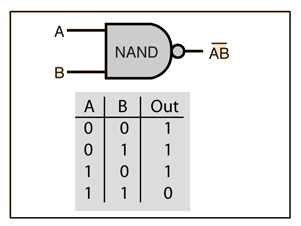
The solution to suppress the echo is making output PB0 low. The NAND gate out will now stay high, ignoring any changes on the other input, which is the incoming serial character.
Only when receiving a character PBO should be made high. Also any incoming character will now not be echoed unless the program wants to receive a character!
Example program
In this routine the standard KIM-1 GETCH routine at $1E5A is encapsulated in a subroutine that prevents the echo by setting PB0. Note that this is not a complete block of the echo, it is only active when the program calls the blocking EGETCHAR. When the program sends out charactersto a dispaly, anything typed at the keyboard will also appear at the display.
The calling program is now responsible for the echoing!
0001 1000 echo .org $1000 0002 1000 ; 0003 1000 echoflag = $17E2 ; flag: 0 normal echo 0004 1000 SBD = $1742 ; KIM 6532 PIA B data register 0005 1000 GETCH = $1E5A ; KIM TTY Getch routine 0006 1000 ; 0007 1000 AD E2 17 EGETCHAR LDA echoflag ; if notechoflag 0008 1003 F0 08 beq normal ; then normal echo 0009 1005 AD 42 17 LDA SBD ; else set TTY bit PB0 to 0 0010 1008 29 FE AND #$FE 0011 100A 8D 42 17 STA SBD ; 0012 100D 20 5A 1E normal JSR GETCH ; get character from input 0013 1010 48 PHA ; save 0014 1011 AD 42 17 LDA SBD ; set TTY bit PB0 0015 1014 09 01 ORA #$01 0016 1016 8D 42 17 STA SBD 0017 1019 68 PLA ; restore received character 0018 101A 60 RTS 0019 101B .end 0020 101B tasm: Number of errors = 0
Does EGETCHAR work on the KIM-1 clones or SImulator?
Micro-KIM and PAL-1: yes, the hardware is identical, IC numbers are different
Corsham Technology: yes, though the hardware for audio is not there, there is still a NAND gate IC17C coupling PA7 and PB0.
KIM-1 Simulator V1.16 and higher: yes.
Enhanced solution: always deaf for input
If you study the hardware shown above you see PB5 also blocks the echo. The following routine tries to use this to make the input permanent deaf.
0001 1000 echo .org $1000 0002 1000 ; 0003 1000 echoflag = $17E2 ; flag: 0 normal echo 0004 1000 SBD = $1742 ; KIM 6532 PIA B data register 0005 1000 GETCH = $1E5A ; KIM TTY Getch routine 0006 1000 ; 0007 1000 ; no echo when reading character 0008 1000 ; 0009 1000 AD E2 17 EGETCHAR LDA echoflag ; if not echoflag 0010 1003 F0 08 beq normal ; then normal echo 0011 1005 AD 42 17 LDA SBD ; else set TTY bit PB0 to 0012 1008 29 FE AND #$FE 0013 100A 8D 42 17 STA SBD ; 0014 100D 20 5A 1E normal JSR GETCH ; get character form input 0015 1010 48 PHA ; save 0016 1011 AD 42 17 LDA SBD ; set TTY bit PB0 0017 1014 09 01 ORA #$01 0018 1016 8D 42 17 STA SBD 0019 1019 68 PLA ; restore received character 0020 101A 60 RTS 0021 101B ; 0022 101B ; no echo only at wish if reading character 0023 101B ; note that using tape I/O will leave PB5 low 0024 101B ; 0025 101B AD E2 17 DGETCHAR LDA echoflag ; if notechoflag 0026 101E F0 05 beq dnormal ; then normal echo 0027 1020 AD 42 17 LDA SBD ; else set TTY bit PB0 to 0028 1023 29 FE AND #$FE ; PB0 low 0029 1025 29 DF dnormal AND #$DF ; PB5 low 0030 1027 8D 42 17 STA SBD ; 0031 102A 20 5A 1E JSR GETCH ; get character from input 0032 102D 48 PHA ; save 0033 102E AD 42 17 LDA SBD ; set TTY bit PB0 and PB5 0034 1031 09 21 ORA #$21 ; high 0035 1033 8D 42 17 STA SBD 0036 1036 68 PLA ; restore received character 0037 1037 60 RTS 0038 1038 .end 0039 1038 0040 1038 tasm: Number of errors = 0
Note that using tape I/O will leave PB5 low, allowing echo, only set high when the program calls DGETCHAR.
Does DGETCHAR work on the KIM-1 clones?
Micro-KIM and PAL-1: yes, the hardware is identical, IC numbers are different
Corsham Technology: no, PB5 is not used.
KIM-1 Simulator: not yet
On this page manuals, most English, some German and other MOS Technology documents
PDFs from all over the internet, archive.org,.thanks for that!
From https://www.retro-commodore.eu/2021/02/14/kim-1-manuals/ come the high quality scans!
Most are own scans and many hours of correcting scans to higher and cleaner quality.
Four version are known to exist, a First Edition January 1976, a Second Edition March 1976 Revision 6500-15A, a Second Edition 6500-15B August 1976, and a Rockwell version Rev 1 1977.
There may have been a 6500-15C on which the Rockwell version is based. From 15A to 15B the difference is in a changed description of the 6530 timer. In the Rockwell version the keypad change of SST switch to the left is documented.
A German version is also known.
 |
Hardware Manual August 1975 First Edition Publications Number 6500-10 6500-10 MCS6500 Hardware Manual August 1975 First Edition |
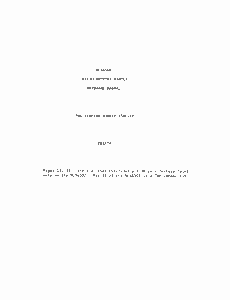 |
Errate letter for Hardware Manual 6500–10 |
 |
Hardware Manual January 1976 Second Edition Publications Number 6500-10A 6500-10A MCS6500 Hardware Manual January 1976 Second edition 6500-10A MCS6500 Hardware Manual Second Edition January 1976 high quality, printed in Germany MCS6500 Hardware manual 6500-10A in HTML format MCS6500 Hardware Manual 6500-10A in ASCII format |
 |
MOS 6500 Hardware Handbuch German version of Hardware manual |
 |
Rockwell 6500 Hardware Manual |
 |
6500-50A MCS6500 Programming Manual January 1976 with reference card |

| 6500-50A MCS6500 Microcomputer Family Programming Manual High-res quality typeset manual by Pickledlight. Local copy. Check the original for updates. Hardcover of MCS6500 Microcomputer Family Programming Manual |
 |
Programming Manual in HTML format Programming manual appendix in HTML format |
 |
Rockwell 6500 Programming Manual |
 |
6500-50 MCS6500 Programming Manual Synertek |
 |
6500-50 MCS6500 Programming Manual Synertek in HTML format |
 |
MOS Microcomputers Programmier Handbuch German version of Programming manual |
A small booklet from MOS Technology comes with every KIM-1 with hints how to use the KIM-1. Like audio cassette, Teletype, paper tape, power supply and the Interval Timer in the 6530.
 |
KIM Hints, grey cover |
 |
KIM-1 Hints, white cover |
 |
KIM hints in text format KIM-1 KIM-1 Hints with additions and corrections |
 |
KIM Application Note #2 Interval timer Operation |
Hardware extensions, see also the KIM System Products pages.
 |
Cross assembler Manual, GE timeshare MCS6500 Microprocessor Software Support Guide for using the MOS Technology Support Software on United Computing Systems timesharing service Describes the MCS6500 Cross Assembler, Simulator and DMP to ROM programs. |
 |
MOS KIMath Subroutines Programming Manual |

|

|
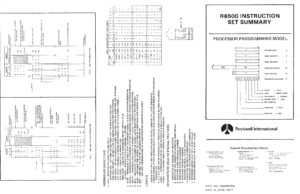
|

|
 |
KIM-1 circuit diagram Rockwell branded circuit diagram KIM-1 poster in high resolution, large picture! KIM-1 poster in high resolution, cleaned up by Joshy of Forum64 and me (August 2022) KIM-1 poster in high resolution, cleaned up and with wide borders KIM-1 poster in high resolution, scan by Dave McMurtrie |
 |
Redrawn KIM-1 circuit diagram |
Written by Jim Butterfield, Stan Ockers and Eric Rehnke (and many other authors!), first published 1977.
Invaluable source of information on programming the standard KIM-1. Background, games, utilities such as Hypertape.
Many reprints, many publishers.
The two versions downloadable here are rescanned and of high quality. The layout is a bit different, the contents are mostly identical. The corrections listed below are applicable to the Human Electron version, the Hayden version already has those corrections.
The previous version and only until now, still all on the internet is low quality, full of artefacts and missing the last page.
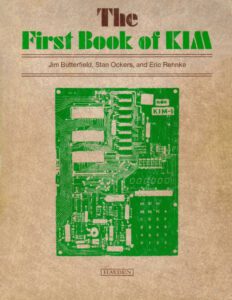
|
First Book of KIM, 1977, 1978 Published by Hayden Book Company. Later version, corrected edition |

|
First Book of KIM, 1977 Published in Europe by Human Electron GMBH. Earlier version, corrections required |

|
The Appendix SYM/KIM tot the First Book of KIM 1979, Robert A Peck, Hayden Book Company |
 |
Last page of Hayden version, a quick reference of the KIM-1 |

|
The First Book of KIM-1, part in text format The First Book of KIM-1 in HTML format Sources of The First Book of KIM-1 in source and papertape format, Jeff Tranter Software from First Book of KIM in binary, audio (Wave) and papertape format, by Dave Willams. |
THE FIRST BOOK OF KIM – corrections
– Authorships: SORT p. 136: by Jim Pollock
– FARMER BROWN, HYPERTAPE, SUPERDUDE: by Jim Butterfield
– Titles: MUTI-MAZE, p 92, should be MULTI-MAZE
– Programs:
– BANDIT: change 0252 and 029C from 08 to 0B
– CODE TEST, p.58: change 02CE thru 02DA to:
D1 65 D4 C5 D5 85 D0 A2 04 B5 D0 95 D1
– MUSIC BOX, p.90: add 027D 84 E7 – STY LIMIT+1
– MINI DIS, p. 125: add 0364 68 – PLA
– LUNAR LANDER, p.84: Press A for altitude display (is not in the Hayden version!)
– WUMPUS, p.107:. If WUMPUS moves into a room. with a pit or superbats, he’ll’ be hidden – you won’t be told WUMPUS CLOSE. Either guess or pitch a can to make him move.
– Asteroid line 0269 should be labeled NOBT
– Blackjack 0292 should be labeled HIT
– PING PONG hex dump 0325 should be “08” not “C0”
– WUMPUS line 06C delete duplicate label “ROOM”
 |
MOS Technology newsletters |
 |
MOS Technology April 1976 customer update |
 |
Customer Errata Letters Customer Errata Letter 1 Customer Errata Letter 2 Customer Errata Letter 3 |
 |
KIM-1 Quick Reference by Jeff Trenter | |
 |
KIM-1 user guide and notes from the book “Microcomputer Principles featuring the 6502/KIM |
 |
MOS Technology Floating point BCD routines MOS Technology January 1976, Rev 0. Numbers of six digits BCD Mantissa, a two digit BCD Exponent and the signs for the mantissa |
 |
MCS6532 Design Specification Published before the first 6532 datasheet |
 |
MCS6500 Microprocessor Software Support Guide for using the MOS Technology Support Software on United Computing Systems timesharing service Describes the MCS6500 Cross Assembler, Simulator and DMP to ROM programs. |
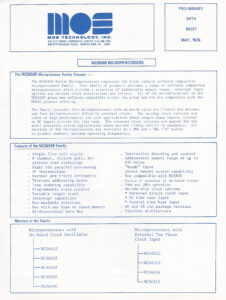 |
MCS6500 datasheet May 1976 |
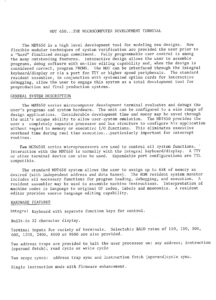 |
MDT 650 product description |
 |
Simplifying Conversion from 6800 to 6502 |
 |
TIM Software development Aid Product description |
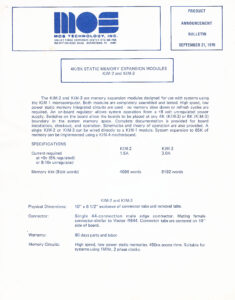 |
KIM 2-3-4-5 product descriptions |

Warranty card that came with the KIM-1


Byte Magazine 1978 09 Plugging the KIM-2 Gap
 |
Byte Magazine 1978 09 Plugging the KIM-2 Gap |